In-Depth Exploration of Water Collection Systems for Sustainable Water Resource Management
Key Characteristics of High-Performing Water Collection Systems
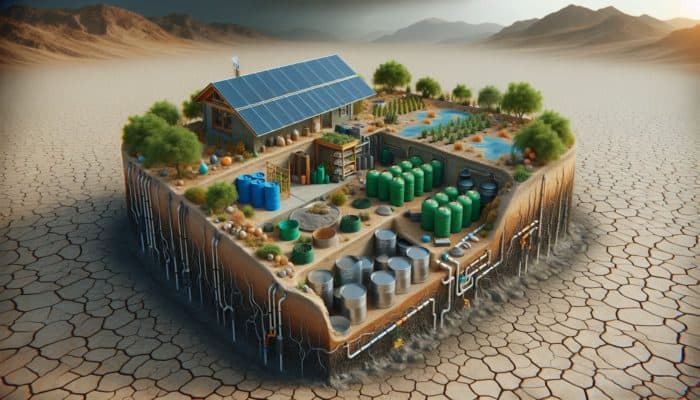
Water collection systems encompass a wide range of advanced technologies and methodologies aimed at effectively capturing, storing, and utilizing water sourced from various origins, with a significant emphasis on rainwater. These systems play a crucial role in the sustainable management of water resources, especially in regions experiencing water scarcity. By adopting these systems, communities can mitigate the impacts of drought while reducing their dependency on municipal water supplies, thereby enhancing the efficient utilization of available water resources. By leveraging natural precipitation and surface runoff, these systems provide clean water for multiple purposes, including irrigation, landscaping, and, when properly treated, even for potable use. Their versatility makes them essential tools in fostering responsible water consumption practices.
The functionality of water collection systems can vary significantly based on diverse global locations, heavily influenced by local climatic conditions and the specific requirements of communities. For instance, areas characterized by tropical climates with substantial rainfall can effectively utilize rooftop systems, while regions facing arid conditions may rely more on techniques tailored for capturing surface runoff. Each type of water collection system is meticulously designed to meet the unique environmental and social needs of the communities it serves, thereby offering adaptable solutions to a broad spectrum of water-related challenges.
Diving into the Various Types of Water Collection Systems Available
A broad spectrum of water collection systems exists, each specifically engineered to address the unique demands arising from diverse geographical and climatic contexts. Each system possesses distinctive features that enhance its efficacy in particular environments. The three primary categories of systems include:
- Rooftop Systems: These systems effectively gather rainwater from rooftops, directing it through gutters into storage tanks for later use. They are particularly common in urban areas due to their effectiveness in utilizing existing infrastructure.
- Surface Collection Systems: These systems accumulate water from land surfaces, such as ponds or swales, where rainwater or runoff can gather. They are particularly advantageous in agricultural settings for irrigation purposes.
- Subsurface Systems: This type centers on extracting groundwater through perforated pipes or trenches. These systems are especially effective in regions where groundwater is abundant and can be accessed without contamination risks.
Each system serves a unique function based on environmental factors and intended applications, enabling communities worldwide to adopt practices that significantly enhance water sustainability and security.
Significant Benefits of Implementing Water Collection Systems
The introduction of water collection systems brings forth numerous advantages that extend beyond mere water conservation. By proficiently capturing and utilizing rainwater, communities can drastically lessen their reliance on municipal water sources. This transition leads to substantial savings on water bills and alleviates the burden on overloaded water treatment facilities.
Moreover, these systems contribute positively to environmental sustainability. By minimizing runoff and reducing the need for extensive stormwater management infrastructures, they help protect local ecosystems from degradation. In regions struggling with water scarcity, such as parts of Africa and the Middle East, water collection systems are essential in ensuring communities have consistent access to this vital resource. Beyond their direct advantages in conserving water, these systems also raise awareness about the significance of sustainable water practices, fostering a cultural shift towards responsible water management.
Understanding the Efficient Functionality of Water Collection Systems
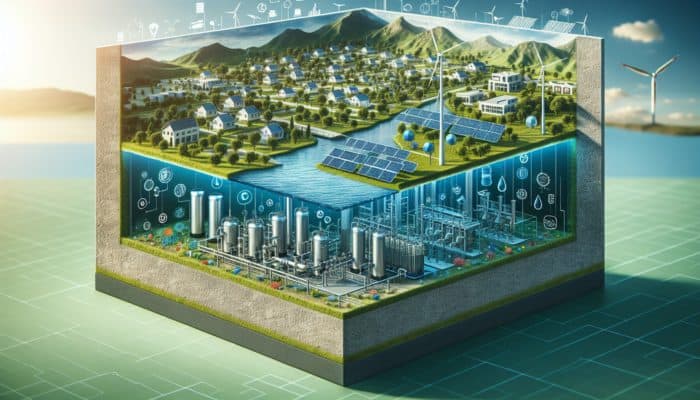
Core Components That Drive Water Collection Systems’ Efficiency
The effective operation of water collection systems depends on several essential components that work together to efficiently capture, store, and distribute water. The primary elements include:
- Catchment Surfaces: These specified areas, such as roofs or paved surfaces, function as the primary collection points for water.
- Conveyance Systems: This includes gutters, pipes, and channels that transport water from the catchment area to storage facilities.
- Storage Tanks: Tanks or cisterns serve as reservoirs for the collected water, protecting it from contamination and evaporation.
- Treatment Units: Depending on the intended use, the collected water may require filtration and treatment to ensure its safety for consumption or irrigation.
Each component is meticulously designed to fulfill the specific requirements of the water collection system, ensuring optimal performance. The synergy among these elements is critical for achieving high efficiency and sustainability in water management practices.
Essential Steps for Establishing a Functional Water Collection System
Creating an effective water collection system involves several structured steps to ensure its proper functionality. The process commences with a comprehensive site assessment aimed at identifying the most suitable location for installation. This assessment encompasses evaluating the topography, rainfall patterns, and existing structures that can be utilized.
Upon completion of the site assessment, the next phase focuses on system design, which entails selecting appropriate materials and determining the layout for catchment surfaces, conveyance systems, and storage facilities. Proper sizing is crucial to accommodate peak rainfall events and ensure sufficient storage capacity. Once the design receives approval, the installation phase begins, where components are constructed or assembled in accordance with the established plan.
Lastly, ongoing maintenance is vital to ensure the system's longevity and efficiency. This includes regular inspections for leaks, clogs, and monitoring water quality, along with cleaning catchment surfaces and storage tanks. By adhering to these steps, communities can create effective and reliable water collection systems that sustainably fulfill their water needs.
Critical Maintenance Strategies and Troubleshooting Techniques for Water Collection Systems
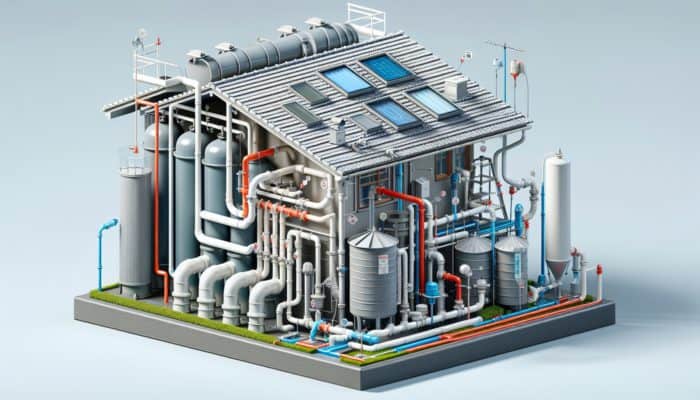
Maintenance is a fundamental aspect of ensuring the operational efficiency of water collection systems. Regular inspections and interventions can identify common issues such as leaks, contamination, and blockages before they develop into significant problems. For example, roof gutters should be routinely cleared to prevent debris accumulation that can hinder water flow.
Leaks within the piping system can result in considerable water loss and should be addressed immediately. Regular evaluations of storage tanks are equally important; sediment buildup can compromise water quality, necessitating thorough cleaning and maintenance. Additionally, treatment units must be closely monitored to ensure they are functioning correctly, as any malfunction can jeopardize the safety of the collected water.
Effective troubleshooting practices involve not only identifying potential problems but also implementing preventive measures. This may include the installation of filters to minimize contamination, the utilization of seals to prevent leaks, or the incorporation of smart monitoring systems that alert operators to any irregularities in water flow or quality. By prioritizing maintenance, communities can enhance the durability and reliability of their water collection systems.
Exploring the Varieties of Water Collection Systems in Use Today
As previously mentioned, an extensive array of water collection systems has been customized to address various environmental and operational needs. Each system is ingeniously crafted to optimize water harvesting efficiently and effectively. Rooftop systems are particularly common in urban settings, where roof space is readily available for collection. Conversely, surface collection systems are frequently utilized in rural areas, especially for agricultural uses.
Subsurface systems, which extract groundwater, are advantageous in regions with a high water table and minimal contamination risks. Other innovative solutions, such as rain gardens and permeable pavements, further enhance water collection by allowing rainwater to naturally filter into the ground while supporting local flora and fauna.
Ultimately, the selection of the system will depend on various factors, including local climatic conditions, available technology, and community needs. By carefully choosing the appropriate type, communities can optimize their water collection efforts, ensuring a sustainable and reliable water supply.
Understanding the Benefits and Challenges of Water Collection Systems
The adoption of water collection systems offers significant benefits, particularly concerning water conservation and economic savings. Communities that successfully implement these systems can significantly reduce their reliance on municipal water supplies, resulting in lower water bills and decreased pressure on local infrastructure.
Moreover, these systems foster a culture of sustainability, encouraging individuals to engage more consciously with their water usage. The environmental benefits are extensive; by capturing rainwater, these systems mitigate stormwater runoff, which can lead to flooding and water pollution. However, challenges do exist, such as initial setup costs and ongoing maintenance requirements. Communities must also address potential water quality concerns to ensure that the collected water is safe for its intended applications. Despite these challenges, the long-term advantages of water collection systems significantly outweigh the drawbacks, making them a valuable investment for sustainable water management.
Expert Insights for Enhancing Water Collection Systems
Best Practices for Designing Efficient Water Collection Systems
The effective design of water collection systems is essential for maximizing their efficiency and longevity. Best practices emphasize the importance of understanding local climatic conditions, as these factors directly affect rainfall patterns and collection potential. For example, regions experiencing heavy monsoon seasons may require larger catchment surfaces and storage capacities to accommodate peak rainfalls, while areas with inconsistent rainfall may benefit from more compact systems.
The selection of materials is equally crucial; opting for durable, corrosion-resistant materials can significantly enhance system longevity and minimize maintenance costs. Additionally, accurately sizing tanks and pipes ensures that systems can meet both average and peak water demands without experiencing overflow or shortages. A prime example of effective system design can be seen in the rainwater harvesting initiatives across urban areas in Singapore, where a combination of rooftop systems and underground storage efficiently collects rainwater in a densely populated setting.
In summary, adhering to these best practices during the design phase leads to the development of resilient water collection systems capable of adapting to changing environmental conditions and evolving community needs.
Innovations Currently Transforming Water Collection Technology
The field of water collection systems is experiencing groundbreaking advancements that enhance operational efficiency and sustainability. State-of-the-art filtration technologies have emerged, enabling the effective purification of harvested rainwater, making it safe for drinking and agricultural applications. Smart monitoring systems equipped with sensors provide real-time data on water levels, quality, and system performance, allowing for proactive maintenance measures to be taken.
Moreover, the use of eco-friendly materials in system construction is gaining traction. Rainwater harvesting systems are increasingly being integrated with renewable energy sources, such as solar panels, to power pumps and filtration units, thereby reducing the carbon footprint associated with water collection. Innovations in modular design also facilitate scalability, enabling communities to expand their systems as their needs grow. These developments not only enhance the functionality of water collection systems but also reflect a broader commitment to sustainable water management practices globally.
Current Trends Impacting Water Collection Systems
The latest trends in water collection systems indicate a shift towards more integrated and community-centric approaches. One prominent trend is the increased utilization of green infrastructure, such as bioswales and rain gardens, which assist in slowing down and capturing stormwater while simultaneously enhancing urban aesthetics.
Additionally, there is a growing focus on community-based water management initiatives that empower local populations to take control of their water resources. These collaborative approaches foster engagement and encourage a deeper understanding of sustainable water practices. The integration of water collection systems with renewable energy solutions is also becoming increasingly common, demonstrating a holistic perspective on sustainable development.
As communities progressively acknowledge the importance of water conservation, these trends signify a collective commitment to enhancing water sustainability and resilience in the face of climate change and resource scarcity.
Evaluating the Environmental Impact of Water Collection Systems
How Water Collection Systems Promote Environmental Conservation
Water collection systems play a pivotal role in fostering environmental conservation. By capturing rainwater and diminishing reliance on traditional water sources, these systems reduce the demand on natural water resources, thereby aiding in the protection of aquatic ecosystems. This is particularly crucial in regions where over-extraction of water has led to habitat degradation.
Furthermore, by minimizing stormwater runoff, water collection systems help prevent soil erosion and safeguard water quality in nearby rivers and lakes. This not only supports local biodiversity but also strengthens the resilience of ecosystems facing stress from urbanization and climate change. The advantages of these systems extend beyond immediate water conservation; they contribute to a healthier environment and a more sustainable future for all.
Reducing Carbon Footprint Through Effective Water Collection
The incorporation of water collection systems into comprehensive water management strategies can lead to a significant reduction in a community’s carbon footprint. By decreasing reliance on municipal water treatment and distribution, these systems lower the energy consumption typically associated with these processes. Water collection systems can play a vital role in reducing greenhouse gas emissions, especially in areas where energy for water treatment is sourced from fossil fuels.
Moreover, by promoting local water use, these systems can alleviate the infrastructural demands for extensive water distribution networks, ultimately leading to decreased energy costs related to pumping and treating water sourced from distant locations. In the context of global initiatives aimed at combating climate change, implementing efficient water collection systems represents a proactive strategy for sustainable living and environmental stewardship.
The Role of Water Collection Systems in Supporting Sustainability Efforts
Water collection systems are essential for achieving sustainability goals across various sectors. They facilitate water conservation, reduce waste, and promote responsible water use within communities. By harnessing rainwater, these systems provide an alternative water source that eases the pressure on diminishing freshwater supplies.
Additionally, their implementation can foster a culture of sustainability, motivating individuals and organizations to prioritize eco-friendly practices in their daily operations. As communities increasingly recognize the significance of sustainable water management, the role of water collection systems is poised to expand, underscoring their necessity in building resilient and sustainable communities.
Examining the Economic Benefits of Water Collection Systems
Cost Savings Associated with Water Collection Systems
Establishing water collection systems can yield substantial financial savings for both individuals and communities. By capturing and utilizing rainwater, households can significantly lower their water bills, particularly in areas where water costs are elevated. The reduced dependence on municipal water supplies alleviates the pressure on local utilities, resulting in lower costs for all stakeholders.
In addition to savings on water bills, these systems can considerably decrease expenses associated with water treatment and infrastructure maintenance. For instance, agricultural communities that adopt water collection practices can lower their irrigation costs while simultaneously improving crop yields. As the demand for sustainable water management solutions continues to grow, the economic benefits of water collection systems become increasingly clear, positioning them as an appealing option for both urban and rural environments.
Broad Economic Advantages of Water Collection Systems for Local Communities
The economic advantages of water collection systems extend beyond individual financial savings, positively influencing entire communities. These systems can create job opportunities in installation, maintenance, and system design, thereby contributing to local economic growth. Additionally, communities that effectively implement water collection systems often see an increase in property values, as homes equipped with such systems tend to attract potential buyers.
Moreover, communities with robust water collection systems enjoy enhanced water security, which is critical for local industries and agriculture. The assurance of a reliable water supply can stimulate economic growth and investment, fostering a stable environment conducive to business development. As communities prioritize sustainable water practices, the broader economic benefits become apparent, significantly contributing to the overall welfare of local populations.
Funding Opportunities for Water Collection Initiatives
Investing in water collection systems can unveil numerous funding opportunities for communities and organizations. Many governmental bodies offer grants and incentives to encourage water conservation and sustainable practices. Environmental organizations also provide financial support for projects aimed at improving water management systems.
Private investors are increasingly recognizing the value of sustainable water solutions, forming potential partnerships to finance innovative water collection technologies. By exploring these funding options, communities can strengthen their water collection infrastructure, leading to enhanced resilience and sustainability in water management. As investment in water collection systems continues to rise, so too do the opportunities for communities to develop sustainable solutions tailored to their specific needs.
Future Trends in Water Collection Systems
Factors Influencing the Future of Water Collection Systems
The future of water collection systems will be influenced by a convergence of technological advancements, increasing water scarcity, and a heightened awareness of sustainability issues. As climate change exacerbates global water shortages, the demand for efficient water management solutions is expected to rise. This urgency will drive innovations in system design and functionality, focusing on optimizing resource utilization while minimizing environmental impacts.
Moreover, advancements in technology, including smart sensors and data analytics, will play a crucial role in transforming water collection practices. These tools will facilitate precise monitoring and management of water resources, enabling communities to respond proactively to changing conditions. As these factors converge, the future of water collection systems will undoubtedly reflect a significant shift toward sustainable and resilient water management practices.
Integrating Water Collection Systems with Other Sustainable Practices
The integration of water collection systems with other sustainable practices signifies a comprehensive approach to environmental management. For instance, combining water collection with renewable energy solutions, such as solar or wind power, can enhance system efficiency while simultaneously reducing carbon footprints. This synergy allows communities to leverage multiple sustainable resources, thereby bolstering their resilience against climate change.
Additionally, water collection systems can be incorporated into green building practices, where sustainable architecture employs water harvesting technologies to optimize overall building efficiency. This holistic strategy not only maximizes resource use but also nurtures a culture of sustainability, encouraging communities to adopt environmentally responsible practices across various sectors.
Innovations Set to Transform Water Collection Technology
The trajectory of water collection technology indicates a future characterized by improved efficiency, automation, and innovation. As technological advancements continue to emerge, we can anticipate the development of advanced materials and systems that enhance the durability and functionality of water collection mechanisms. Innovations such as self-cleaning surfaces and automated monitoring systems will facilitate seamless operations and maintenance, relieving communities of the burden.
Furthermore, a growing focus on data-driven solutions will enable more precise water management, allowing systems to adapt in real-time to fluctuations in weather patterns and water demand. As these advancements unfold, water collection systems will become increasingly accessible, scalable, and effective, solidifying their role in sustainable water management practices worldwide.
Impact of Policies and Regulations on Water Collection Systems
Government policies and regulations will significantly influence the future landscape of water collection systems. As governments prioritize sustainable water management, regulatory frameworks will encourage the adoption of water collection practices. Incentives, such as tax breaks and grants for installation, will motivate communities to invest in these systems.
Moreover, regulations pertaining to stormwater management and water conservation will likely mandate the integration of water collection systems into new developments. By establishing policies that support sustainable water practices, governments can play a vital role in promoting the widespread adoption of water collection systems, ultimately contributing to global efforts to ensure water sustainability.
Encouraging Community Involvement in Water Collection Initiatives
Engaging communities and the public in water collection initiatives is crucial for raising awareness and fostering collaborative action. Community-driven programs advocating for water collection practices can enhance public understanding of the significance of sustainable water management. Educational campaigns and workshops can empower individuals to adopt water-saving measures in their homes and businesses, promoting a more sustainable approach to water utilization.
Public engagement also results in more effective and locally tailored solutions. Involving community members in planning and implementing water collection systems ensures that their unique needs and concerns are adequately addressed. As communities become increasingly engaged in water management, they develop a sense of ownership and accountability for their water resources, leading to lasting cultural shifts toward sustainability.
Frequently Asked Questions About Water Collection Systems
What Are the Key Components of a Water Collection System?
The key components consist of catchment surfaces, conveyance systems, storage tanks, and treatment units. Each component plays a crucial role in efficiently capturing, transporting, and storing water.
How Can Water Collection Systems Benefit Urban Areas?
Urban areas can experience reduced demand on municipal water supplies, lower water bills, and improved stormwater management. These systems contribute to sustainability and climate resilience.
What Maintenance Is Essential for Water Collection Systems?
Routine maintenance includes cleaning gutters and tanks, inspecting for leaks, and monitoring water quality to ensure optimal performance. This ensures the system operates efficiently and enjoys an extended lifespan.
Are There Any Limitations to Water Collection Systems?
Limitations may include initial setup costs, potential water quality issues, and varying efficiency based on local rainfall patterns. Addressing these challenges is crucial for the effective implementation of this initiative.
Can Water Collection Systems Be Integrated with Other Technologies?
Yes, they can be integrated with renewable energy systems and smart technology for monitoring and automation, enhancing their overall efficiency and sustainability.
What Are the Environmental Benefits of Water Collection Systems?
Water collection systems help reduce runoff, prevent soil erosion, and decrease demand on natural water resources, contributing to ecological balance and biodiversity.
How Do Water Collection Systems Contribute to Economic Savings?
They lower water bills, reduce infrastructure costs, and minimize the need for expensive water treatment, resulting in significant economic benefits for communities and individuals.
What Innovations Are Shaping the Future of Water Collection Systems?
Innovations include advanced filtration technologies, smart monitoring systems, and modular designs that enhance efficiency, sustainability, and adaptability.
How Can Communities Promote Water Collection Practices?
Communities can promote water collection practices through educational programs, public workshops, and incentives for homeowners to install collection systems.
What Role Do Policies Play in Promoting Water Collection Systems?
Government policies can incentivize the adoption of water collection systems through grants, tax credits, and regulations that mandate sustainable practices in new developments.
Explore our world on X!
The post Water Collection Systems: Essential Solutions for Sustainability appeared first on Survival Bite.
The Article Water Collection Systems: Key Solutions for Sustainable Living Was Found On https://limitsofstrategy.com
The Article Water Collection Systems: Essential Solutions for Eco-Friendly Living First Appeared ON
: https://ad4sc.com

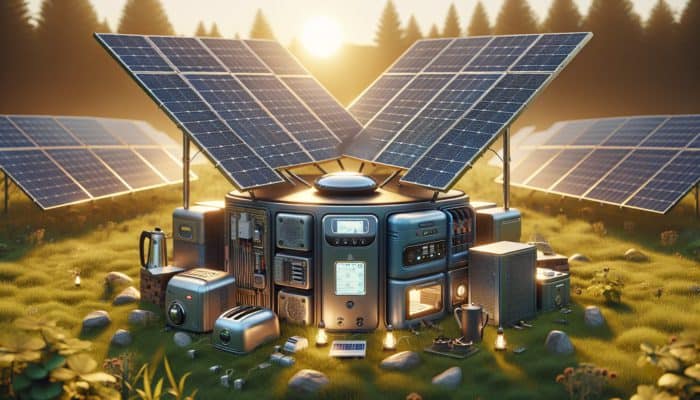


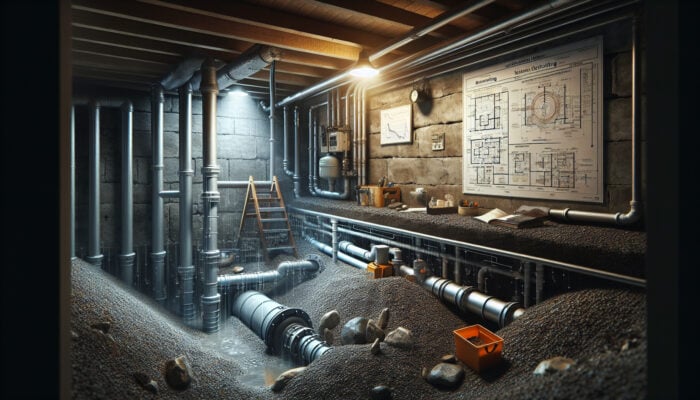








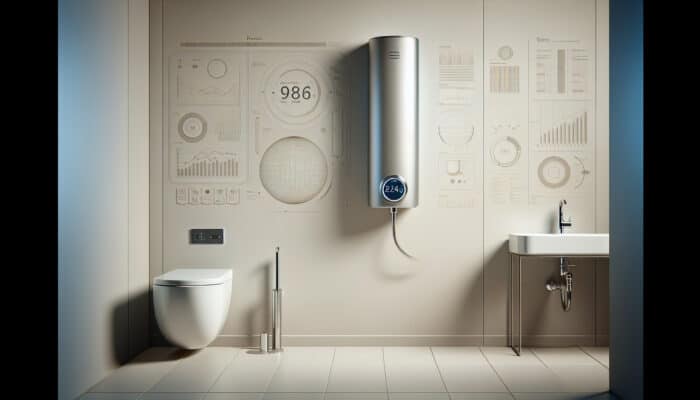

Leave a Reply